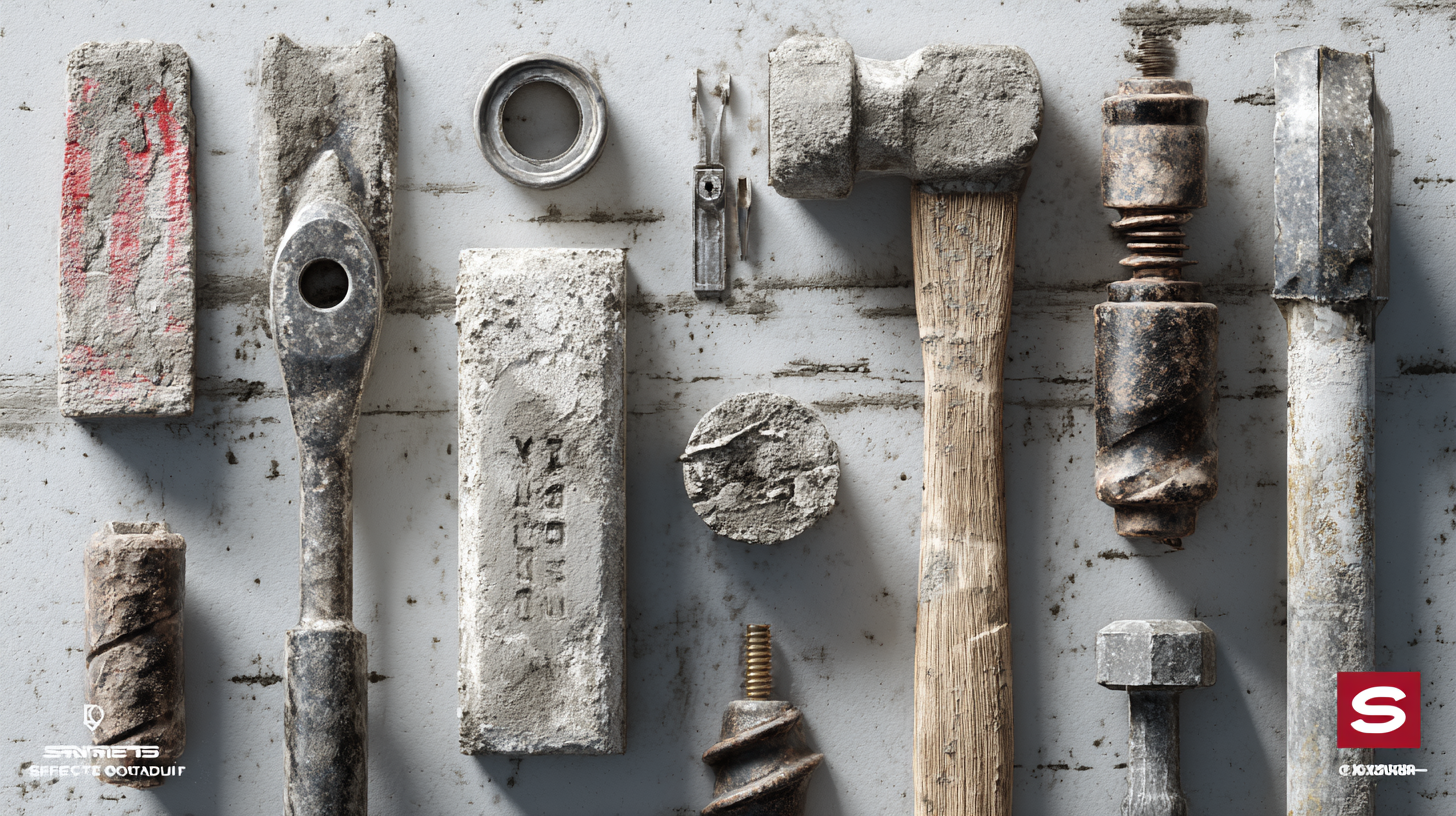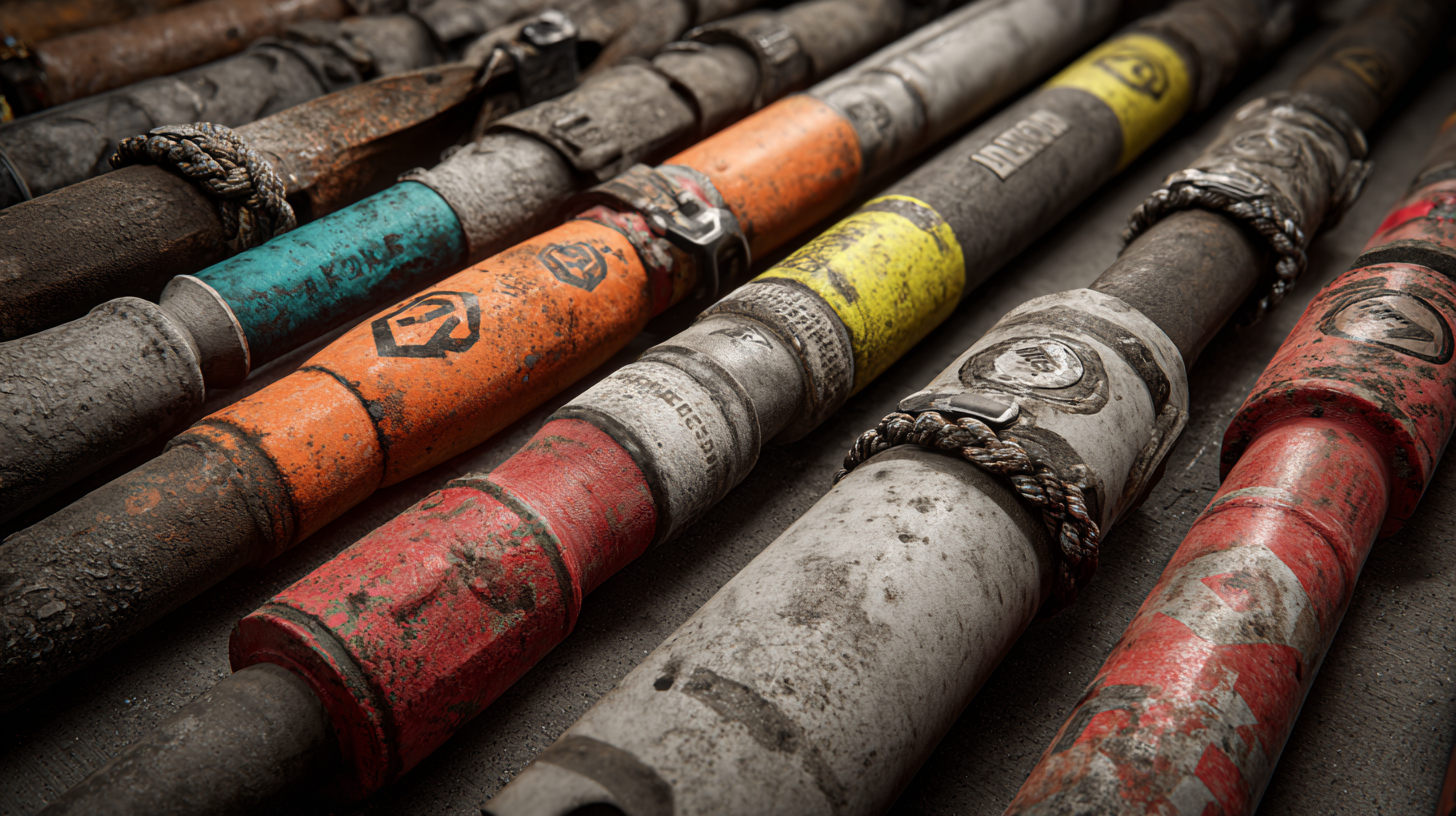Office USA: 706-658-1122 | Tech Support: 706-362-4813
Office Bulgaria: +359 431 64477
Exploring the Unique Features and Applications of the Best Concrete Tools for Global Buyers
In the ever-evolving construction industry, the significance of high-quality concrete tools cannot be overstated. According to a recent report by the Global Concrete Tools Market, the demand for advanced concrete tools is expected to reach USD 5 billion by 2025, driven by the growth of infrastructure projects and residential developments worldwide. Concrete tools are essential for achieving precision, efficiency, and durability in both commercial and residential applications. From mixers to trowels, each tool plays a pivotal role in ensuring that the finished product meets the rigorous standards of quality and safety demanded by today’s construction practices. As global buyers seek to enhance their operational capabilities, understanding the unique features and applications of the best concrete tools available on the market becomes crucial. This blog aims to provide insights into the various types of concrete tools, their innovative functionalities, and their impact on project outcomes, equipping readers with the knowledge needed to make informed purchasing decisions.

Unique Attributes of Top Concrete Tools for the Global Market
The global market for concrete tools is undergoing significant transformation, highlighted by the unique attributes that cater to diverse customer needs. As construction projects evolve, there is a growing demand for high-quality concrete tools that not only enhance productivity but also ensure durability and sustainability. Innovations such as advanced mixing technologies and ergonomic designs have emerged, making tasks more efficient while reducing the risk of operator fatigue.

Furthermore, the integration of environmental considerations in manufacturing concrete tools is notably reshaping the industry. Tools that incorporate eco-friendly materials and energy-efficient designs are becoming increasingly popular among global buyers. With the construction material testing equipment market projected to grow substantially in the coming years, the application of these specialized concrete tools will play a crucial role in meeting the evolving standards of quality and sustainability within the industry. This highlights the importance of understanding the unique features that differentiate top concrete tools, ultimately driving their adoption in various construction settings worldwide.
Innovative Features of Chinese-Made Concrete Tools
Chinese-made concrete tools have steadily gained a reputation for their innovative features and high-quality performance. One standout aspect is the incorporation of advanced technology designed to enhance efficiency. For instance, many Chinese manufacturers are now utilizing smart sensors that provide real-time data on tool performance, enabling users to make quick adjustments and optimize their work processes. This not only improves productivity but also extends the lifespan of the tools.
Tip: When selecting concrete tools, consider opting for those equipped with smart technology features. These tools can adapt to varying conditions, increasing both safety and effectiveness on site.
Additionally, the ergonomic design of many Chinese concrete tools offers a significant advantage. Features such as anti-slip grips and adjustable handles reduce fatigue and help workers maintain precision during extended use. This focus on user comfort can lead to higher quality work and fewer errors, making it a worthy investment for international buyers.
Tip: Always prioritize tools with ergonomic designs for long-term health benefits and enhanced work efficiency. Consider testing different models to find the best fit for your specific tasks.
Unique Features and Applications of Chinese-Made Concrete Tools
Comparative Analysis: Domestic vs. International Concrete Tool Brands
When it comes to concrete tools, buyers face an array of options that vary significantly between domestic and international brands. Domestic manufacturers often emphasize a blend of quality, durability, and localized customer service, appealing to contractors who prefer to support local businesses. Brands like DeWalt and Makita pride themselves on robust warranty programs and responsive customer support, which can be instrumental for contractors facing tight project deadlines. Their tools are typically designed keeping in mind the specific needs of local construction standards and building practices, ensuring that buyers feel secure in their investment.
On the flip side, international brands such as Bosch and Hilti frequently introduce cutting-edge technology and innovative designs that can set them apart in the market. These companies often benefit from larger-scale production capabilities, which can lead to more competitive pricing for their tools. Furthermore, international brands tend to have a broader array of specialized tools and accessories, catering to diverse construction environments globally. For example, Bosch’s advanced angle grinders are often favored for their powerful performance in demanding conditions. Ultimately, the choice between domestic and international brands hinges on what buyers prioritize: community support and specific local needs versus innovation and global standards in performance.
Practical Applications of Concrete Tools in Various Industries
The versatility of concrete tools plays a crucial role in numerous industries, driving innovation and efficiency. In construction, for instance, specialized tools like concrete saws and trowels enable workers to achieve precise finishes and cuts, ensuring structural integrity and aesthetic appeal. These tools are designed to handle various tasks, from mixing and pouring to leveling and finishing, catering to both large-scale projects and smaller renovations. The right concrete tools streamline processes, reduce labor time, and enhance safety on job sites.
Beyond construction, concrete tools find essential applications in artistic fields as well. Concrete sculptors utilize textured finishers and molds to create unique art pieces, transforming raw material into stunning visual statements. Similarly, landscape architects rely on concrete tools to design outdoor spaces, using techniques such as stamped concrete to replicate natural materials and integrate functionality with beauty. As global buyers seek innovative solutions, understanding the specific applications of these tools in various industries is imperative to make informed purchasing decisions and adopt best practices for quality results.
Exploring the Unique Features and Applications of the Best Concrete Tools for Global Buyers
| Tool Name | Type | Application | Material | Features |
|---|---|---|---|---|
| Concrete Mixer | Mixing | Construction | Steel, Plastic | Portable, Easy to Clean |
| Concrete Cutter | Cutting | Road Work | High Carbon Steel | Adjustable Depth, Safe Operation |
| Concrete Vibrator | Vibrating | Foundation Work | Plastic, Steel | Lightweight, Efficient |
| Concrete Trowel | Finishing | Surface Treatment | Stainless Steel | Ergonomic Design, Durable |
| Concrete Pump | Pumping | Large Constructions | Steel, Rubber | High Capacity, Long Reach |
Future Trends in Concrete Tool Development and Technology Integration
The future of concrete tools is rapidly evolving, driven by technological advancements and the growing demand for efficiency in construction practices. According to a report by MarketsandMarkets, the global concrete tools market is projected to reach $8.5 billion by 2025, with a compound annual growth rate (CAGR) of 6.2%. This growth is largely fueled by innovations in tool design, such as the integration of smart technologies that enhance precision and user control.
As manufacturers continue to prioritize research and development, features like cordless operation, increased durability, and improved ergonomics are becoming standard. For example, battery-powered concrete tools are now capable of delivering the performance of their corded counterparts while offering unparalleled mobility. Additionally, the integration of augmented reality (AR) in tool usage is beginning to assist workers in achieving better results, as evidenced by studies indicating that AR can boost productivity by up to 25%.
**Tip:** When selecting concrete tools, consider models that incorporate smart technology for real-time performance monitoring. This feature not only enhances accuracy but can also prevent tool wear and prolong overall lifespan.
**Tip:** Always prioritize ergonomics when choosing tools, especially for tasks that require extended use. Tools designed with user comfort in mind can significantly reduce fatigue and improve work efficiency on the job site.

